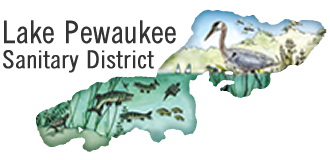In 1990, under the direction of our citizen advisory committee, the Lake Pewaukee Sanitary District began a program to protect remaining wetlands in the Watershed and lake drainage basin. The Committee understood that without these sensitive buffer areas, the long term water quality of our lake was in jeopardy. Although some areas were under conservancy zoning it was felt to be inadequate for the long term protection of the lake and watershed that was required. Ownership was the only way to insure permanent conservancy.
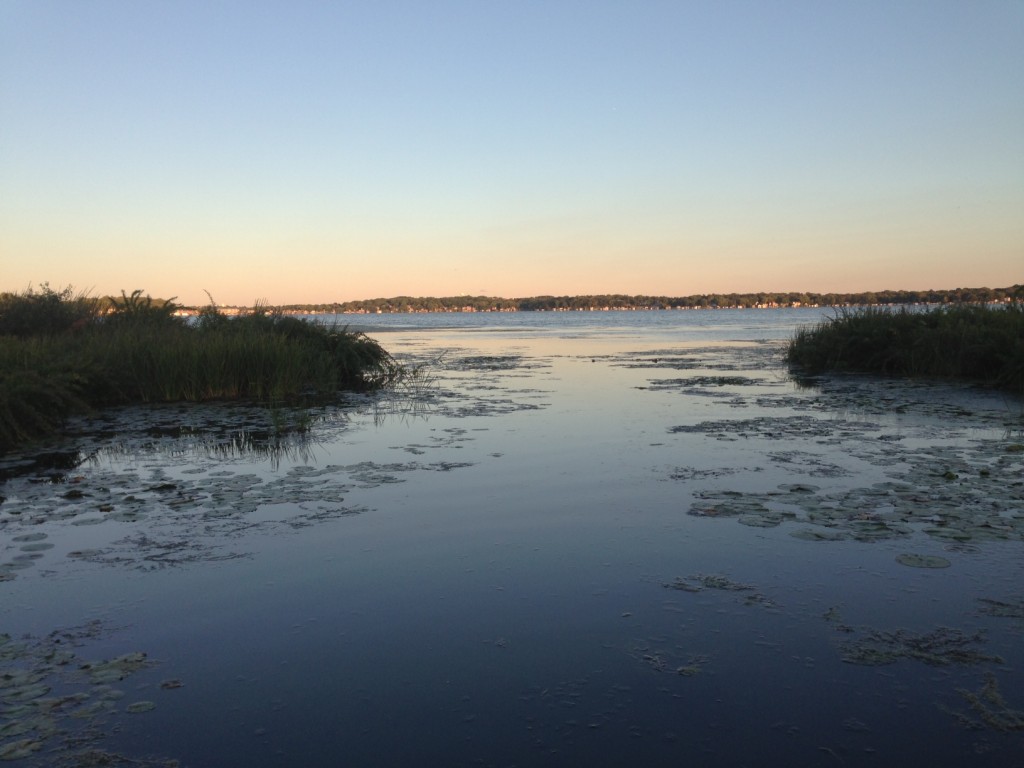
Taylors Bay Outlet to Lake under Protected Ownership
With maps provided by the Southeastern Wisconsin Regional Planning Commission, a minimum of 350 acres of the most critical wetlands was identified for immediate purchase by the District. In the first year, with money from donations and the district tax levy, there were 72 acres purchased. We also received a donation of 8 acres that year.
Currently the District is approaching the 350 acre original goal of wetland acquisition and protection. This was accomplished by District direct purchases, WDNR grants and local donations. The parcels range in size from 3 to 56 acres and the average cost to the district was slightly over $1000 per acre. While most of the first parcels acquired consisted of land that was zoned waste or agricultural, many parcels contained potential building sites. The District understands that in many cases protecting the wetlands and prairies required some acquisition of some buildable areas that would have a negative impacted the wetlands and prairies downstream. The type of land ranges from wooded uplands to bogs.
Among our success stories are:
(Please see Wetland Map for location)
Taylors Bay
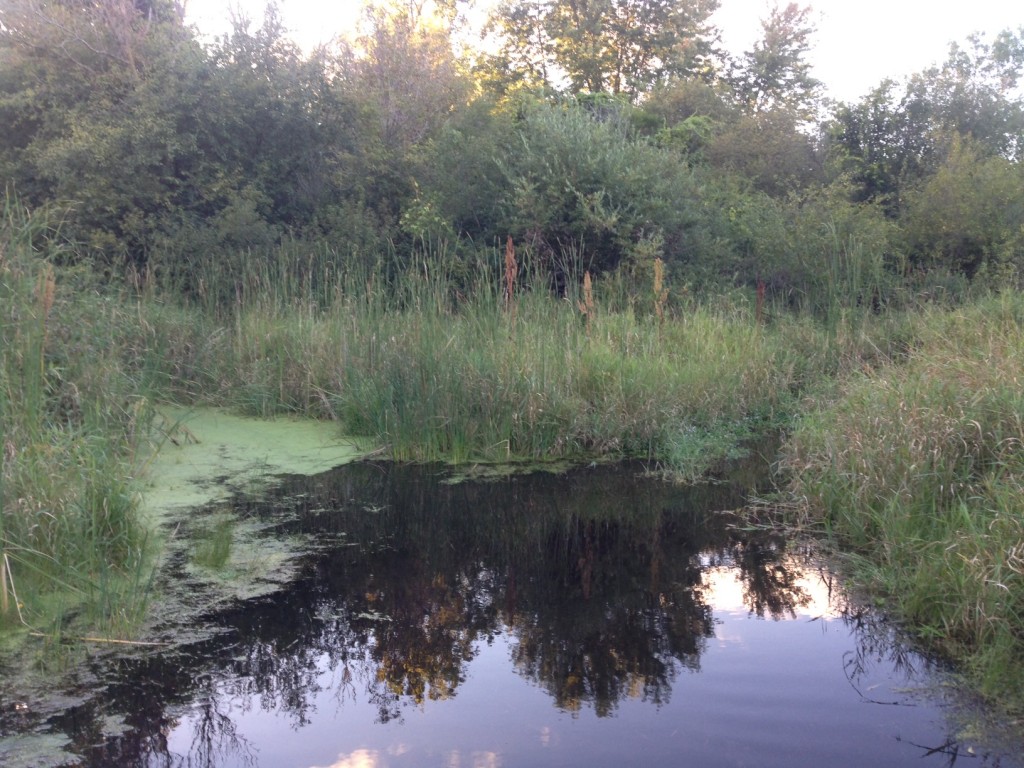
Taylors Bay Inlet – creek and vegitative buffer zone
This 46 acre piece of property contains mostly wetlands with 800 feet of lake front property. The land use ranges from bog, to deep and shallow marsh, to sedge meadow. Plants include Cat-tail, Bur-reed, Sedges, Skunk cabbage, Grass of Parnassus, Nodding Ladies’-Tresses, Fringed gentian, and Pitcher-plant.
Coco Creek
This 75 acres is split in 2 main locations along a spring fed stream. The land use ranges from shallow marsh, to sedge meadow and shrub Carr. Plants include Bur-reed, Prairie cord grass, Boneset, Sneezeweed, Joe-pye weed, and Closed gentian. This creek is considered to have a very high water quality.
Meadowbrook
This 38 acre site is along the state bike trail. The property ranges from shallow marsh, to fresh meadow, to low prairie. Plants include Sedges, Asters, Blue flag, Swamp thistle, Prairie dock, Culvers root, and Small White Lady’s-Slipper. This area also contains critical wetlands and vegetation that is important for northern pike spawning.
Cull Land
This 75 acres contains prior converted farmland. The acquisition of this area which is located on the upper reaches of Coco Creek was a joint effort with the District, the land developer and the Department of Transportation. The DOT began a wetland restoration project on 34 acres of this parcel in the year 2000 and it has been successfully completed to date.
Gluth Land
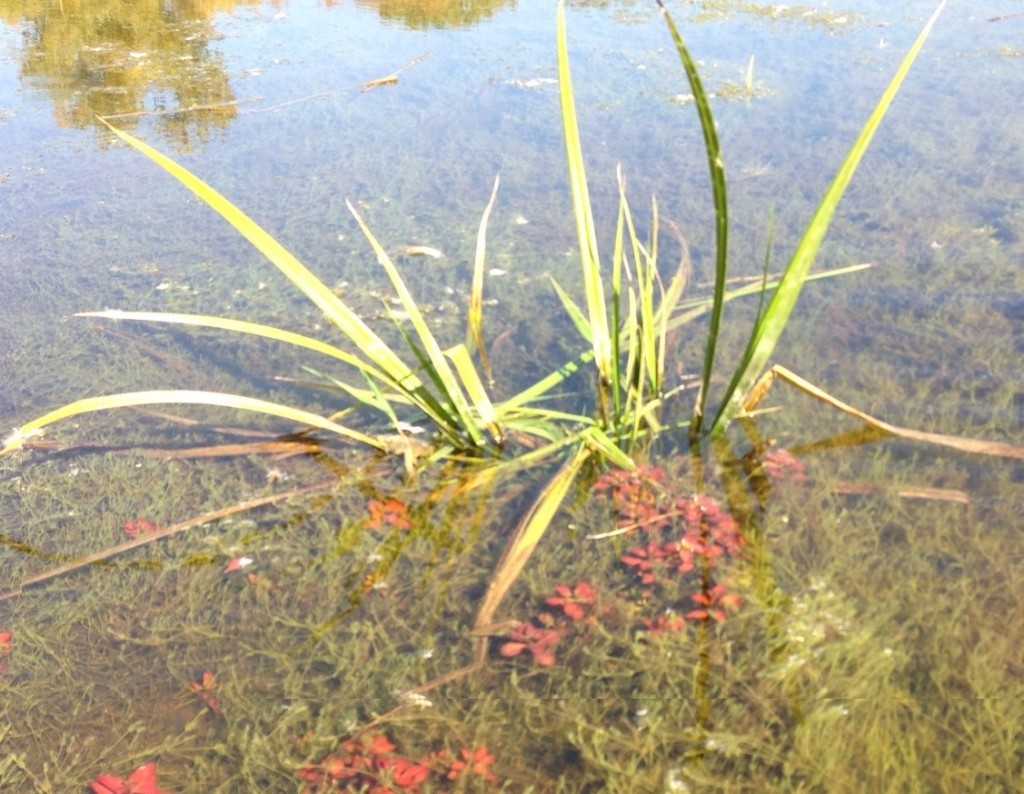
Spawning Habitat on Gluth Land
This 32 acre parcel was listed in the Southeastern Wisconsin Regional Planning Commissions report as a parcel that contained critical species habitat and it was highly recommended to put in government ownership. The parcel contains natural prairies, an oak savanna, a spring fed pond, and wooded uplands where state threatened species were identified along with 50+ native prairie and wetland plants. A spring fed pond with a small outlet creek surrounded by native vegetation was identified as critical northern pike spawning habitat by the Wisconsin Lutheran College students as a class project and study.
A Wisconsin Department of Natural Resources Lake Protection Grant was applied for and received to help the district obtain this critical piece of property.
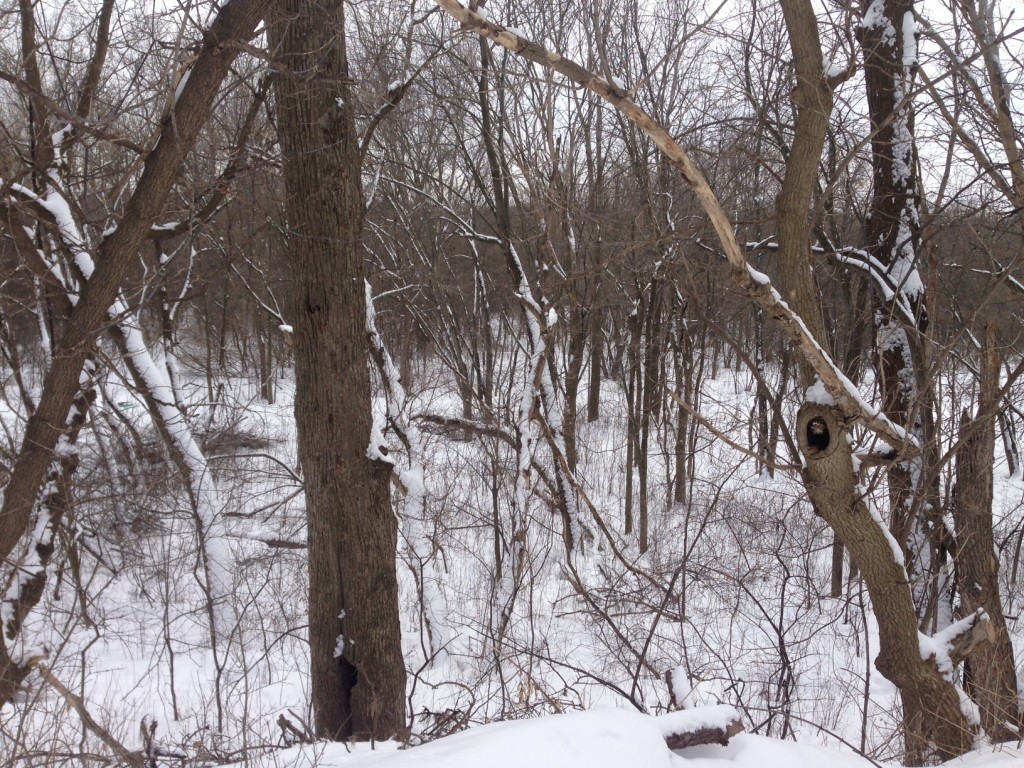
Wooded Wetland on Gluth Land
Ogden Land
This 56 acre parcel was also listed in the Southeastern Wisconsin Regional Planning Commissions technical report as an area of special concern and recommended for government ownership. This parcel of property has a spring fed pond, large prairie areas, wetlands and some upland property. There are approximately 50 acres of wetland and prairie and about 6 acres of upland. The upland property is zoned industrial and is a designated site to help with the aquatic plant management on Pewaukee Lake. This property will be instrumental in recycling the lake’s aquatic plants that are removed on an annual basis. Removing and recycling these plants reduce the overall nutrient loadings in the lake. The wetlands and prairies will be improved to help the water quality of the lake and Coco Creek.
Why buy these wetlands?
First, it is important to understand some rules and regulations as It may be perceived that because a piece of property is zoned conservancy or identified as wetlands that it can’t be built on. Wrong. There is the ability to “mitigate wetlands” and change zoning. Mitigating wetlands means a developer could actually attempt to buy wetland in another watershed (outside of Pewaukee Lake’s watershed) and protect that wetland in exchange to build on a wetland that is in the Pewaukee Lake watershed. If this occurs, here’s what we get:
- Protect against the degradation of our lake’s water quality.
By building on a wetland you are adding impervious surfaces (roof tops, driveways, etc) and you are removing previous surfaces (grasslands, prairie, woodlands). These wetlands and prairies contain deeply rooted vegetation that thrives on nutrients and heavy metals. Heavy metals come from cars, rust and nutrients come from fertilizers and decaying leaves and grass clippings). These deeply rooted plants remove these heavy metals and nutrients and act as a natural cleaner of the water. Removing nutrients means less nutrients in the lake for the aquatic vegetation to thrive on. This means less invasive aquatic plants to cut. Less decaying plants means less sediment deposits, more oxygen in the water (happier fish and aquatic life) and less chance for algae blooms. - Protect against the removal of areas that provide ground water recharge.
The rain that falls from the sky and into our watershed is needed to infiltrate into the ground to help “recharge” the ground water supply that feeds our wells and supply’s us with our drinking water. If all these areas get covered with impervious surfaces, then no storm water will reach these ground water recharge areas. Ours wells go dry and the lake levels start dropping. - Protect against the removal of areas for wildlife to flourish.
Remember that the world itself is an ecological balance of all the plants and animals. Removing the plants in return removes the insects such as butterflies, dragon flies and grasshoppers. When you remove the bugs, there’s nothing for the birds to eat so you removed the birds. The deer feed on the plants in the prairies and wetlands, when those are gone they move into the subdivisions and eat your plantings. Next someone is hiring sharpshooters to kill the deer.The same goes for the turtles, snakes and aquatic life. Remove the wetlands and you remove the frogs and turtles and you remove the natural spawning vegetation for the fish. Without natural reproduction our fish population relies on WDNR stocking programs.

Taylors Bay Outlet to Lake
What is the solution?
First everyone should understand the “we, the people living in the area are the problem”. We are the ones building our homes, driveways, driving cars and boats that pollute the area. Understanding that is number one and doing what we can to minimize the impacts and educate others is number two. Helping be the source of the solution is number three.
The Wetland Conservancy Fund is funded partially by the Lake Pewaukee Sanitary District user’s fee. (This is a very small amount of the user fee.) New developments have a “wetland fee” that goes into this wetland conservancy fund. As of 2014 the “wetland fee” is $20, this fee increases slightly every year.
Lastly, it is the good people in the area that understand the value of protecting these areas and provide donations to help buy these wetlands and prairies.
Please consider supporting this very important wetland conservancy program/fund. Your donations are tax deductible.
